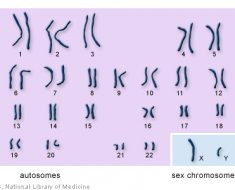- Short-term motor learning appears not to require physical change in the brain
- Brain’s premotor cortex may use a ‘neural scratch pad’ to calculate fine adjustments
- Brain can try different things in simulation without ‘screwing up what it’s already doing’
CHICAGO —- Northwestern Medicine scientists have discovered a neural mechanism for making rapid, fine adjustments in precise motor activity.
The study, led by Lee Miller, professor of physiology at Northwestern University Feinberg School of Medicine, found that the brain’s premotor cortex may use a “neural scratch pad” between it and the primary motor cortex to calculate fine adjustments in reaching plans.
“This kind of short-term motor learning appears not to require structural changes within the brain, making it faster and more flexible,” said Miller, also a professor of biomedical engineering at Northwestern’s McCormick School of Engineering.
The study will be published Oct. 18 in the journal Neuron.
Neuroscientists have been probing how the brain adapts motor behavior on short time scales for many years. Previous research has shown that it takes about 15 minutes for the brain to significantly adjust motor behavior, so scientists would expect to find a matching neural signature—decaying or changing activity over this time during which behavior is adjusted.
Until now, searches of the motor cortex for this signature have proved fruitless.
In the current study, the investigators widened their scope, measuring activity in both the motor cortex and the premotor cortex during reaching movements in primate models. They found that when the reaching motion was pushed off course and had to be adjusted back, functional relations between neurons in the two areas remained unchanged. This seemed to rule out physical changes in the brain as the mechanism responsible for the adjustment.
However, parsing the signals in the premotor cortex to the motor cortex revealed two distinct sets. One set contained signals that appeared to control activity in the motor cortex, called the potent projection. A second set of signals essentially canceled themselves out on the way to the motor cortex, called null projection. This allows the brain to simulate the effects of different motor plans without ever performing the action, Miller said.
“The brain can try out different things in simulation without screwing up what it’s already doing,” Miller said. “Then when it’s got it figured out, it can send these modified instructions to the motor cortex through the potent projection.”
The time course of these changing computations in the null projection matched up with the missing 15-minute interval, according to Matt Perich, first author of the study and former graduate student in the Miller laboratory.
“This suggests that something is happening within the premotor cortex: the null projection may undertake its own type of computation or error processing, and it eventually tells the motor cortex what to do,” Perich said.
The fact that these short-term adjustments appear not to require physical change in the brain may simplify the development of brain-computer interfaces, literal connections to the brain that do things like control prosthetic limbs.
“The structure is surprisingly stable,” Perich said. “Now that we have a more fundamental understanding of what this process looks like, we hope to find ways of incorporating this into the interfaces.”
More investigation is required to fully understand how these null projections are used to adjust motor function, according to Miller.
“Our decoders have to be smart enough to look at that null activity and make sure they do not make the arm move or do something it’s not otherwise supposed to do, since the brain wouldn’t have,” Miller said.
In another related study, published in Nature Communications, Miller and colleagues found that when faced with uncertainty about how to move, the premotor cortex only prepares one completed “reach plan” at a time. This type of decision-making and planning occurs before the activity reaches the motor cortex, suggesting a role for null projections beyond error correction.
Source: Read Full Article





